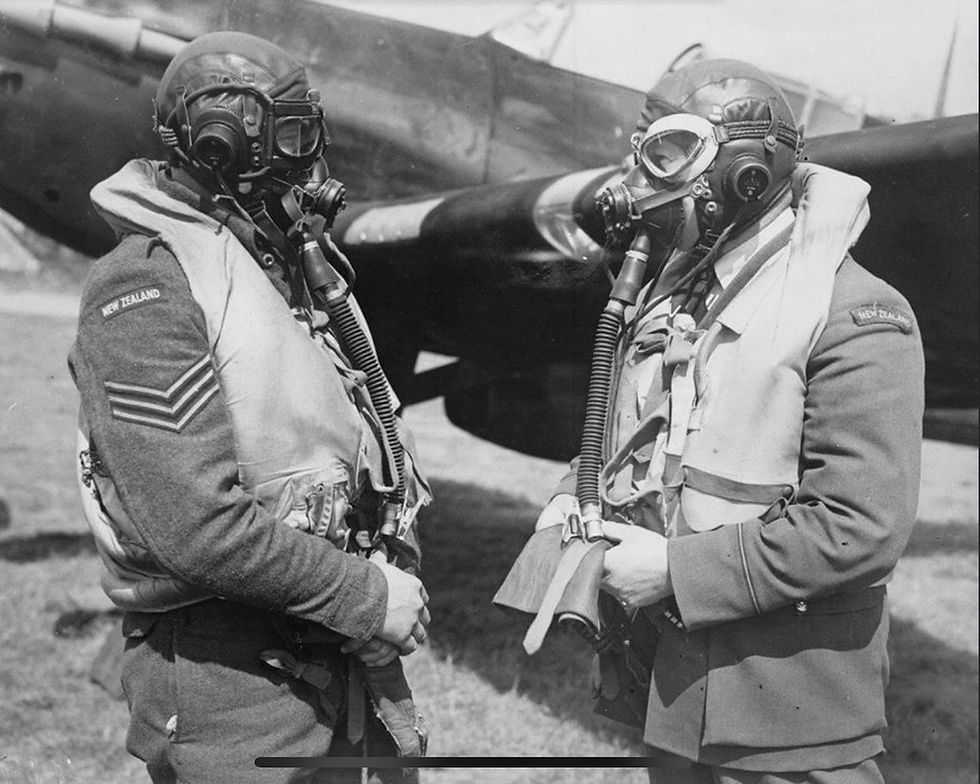RAF ‘D LEWIS’ BATTLE OF BRITAIN PRIVATE PURCHASE FLYING GOGGLES
- Ben Edmonds
- Jun 20, 2021
- 2 min read

THE HISTORY
In 1935 the RAF enacted a rapid expansion of its pilot corps, and by the time war broke out in 1939 there were a large number of pilots who had taken commissions in peace time. One of the largest pools for new recruits were the plethora of private flying clubs that had sprouted throughout the country, and often these pilots brought with them their own flying gear, purchased privately from outfitters such as D Lewis, S Lewis, Burberry and Austin Reed et al. Once the realities of wartime material shortages came into effect, the Air Ministry (AM) looked to private contractors to assist in producing flying kit.

D Lewis Ltd, notable amongst aviators and motorists of the 1930s, emerged as one of the most prolific contractors for flying kit. Officers could receive a 10% discount, and a vast number of officially designated Air Ministry items were sub-contracted, such as Mark IIIA Goggles, 1936 Pattern Boots and even B Type Flying Helmets. The more interesting repertoire of available items were the privately made items, carried over from the halcyon days of airshows and pageants, before the war was a conceivable reality.
Though D Lewis is perhaps renowned among collectors for its ‘Prestige’ Flying Suit - plain overalls produced in white, black, navy and tan twill - it also made an equally noteworthy flying goggle in the guise of the Luxors made by E. B. Meyrowitz.
THE GOGGLES
Simply called ‘Aviator Goggle’, one can see the similarities with Luxor goggles of the time. The frames were finished in chromed nickel, with vented sides and a central adjuster bridge.
The characteristic rubber cushions stand out; produced in a cream sorbo rubber, they offered extreme comfort (especially compared to the available AM goggles of the time), and made a fashionable statement.
Perhaps most interestingly with these goggles is the fact the lenses were Triplex made, with laminated glass, and the strap was copied directly from the AM Mark II Flying Goggles. Both the strap and the lenses met AM requirements for serviceable goggles, proving that it was not just the Luxors in use during the war. (My particular pair are named to an individual called ‘Nicholson’).
A number of period photos showing private purchase goggles in use often mis-identify them as Luxors. Below are a few photos showing the D Lewis goggles in use:

Above: Sergeant Ron Stillwell (DFM, DFC) of 65 Squadron, preparing to take off in Spitfire “YT-X” during the Battle of Britain. A very interesting photo, and proof it was not just officers who were partial to private purchase items. Note that the microphone is unhinged to facilitate communications with the groundcrew.

Another superb photo showing the D Lewis goggles in use by the New Zealand pilot on the right. The goggles are worn with an early C Type Flying Helmet and E Type Oxygen Mask.
References:
Special thanks to Mick Prodger.
See also:
Mark Hillier, The RAF Battle of Britain Fighter Pilot's Kitbag, (Fontline Books, 2018)
Mick Prodger, Vintage Flying Helmets: Aviation Headgear Before the Jet Age, (Schiffer, 1995)
Dilip Sakar, Battle of Britain: The Photographic Kaleidoscope, V.II, (Ramrod, 1999)



















Comments